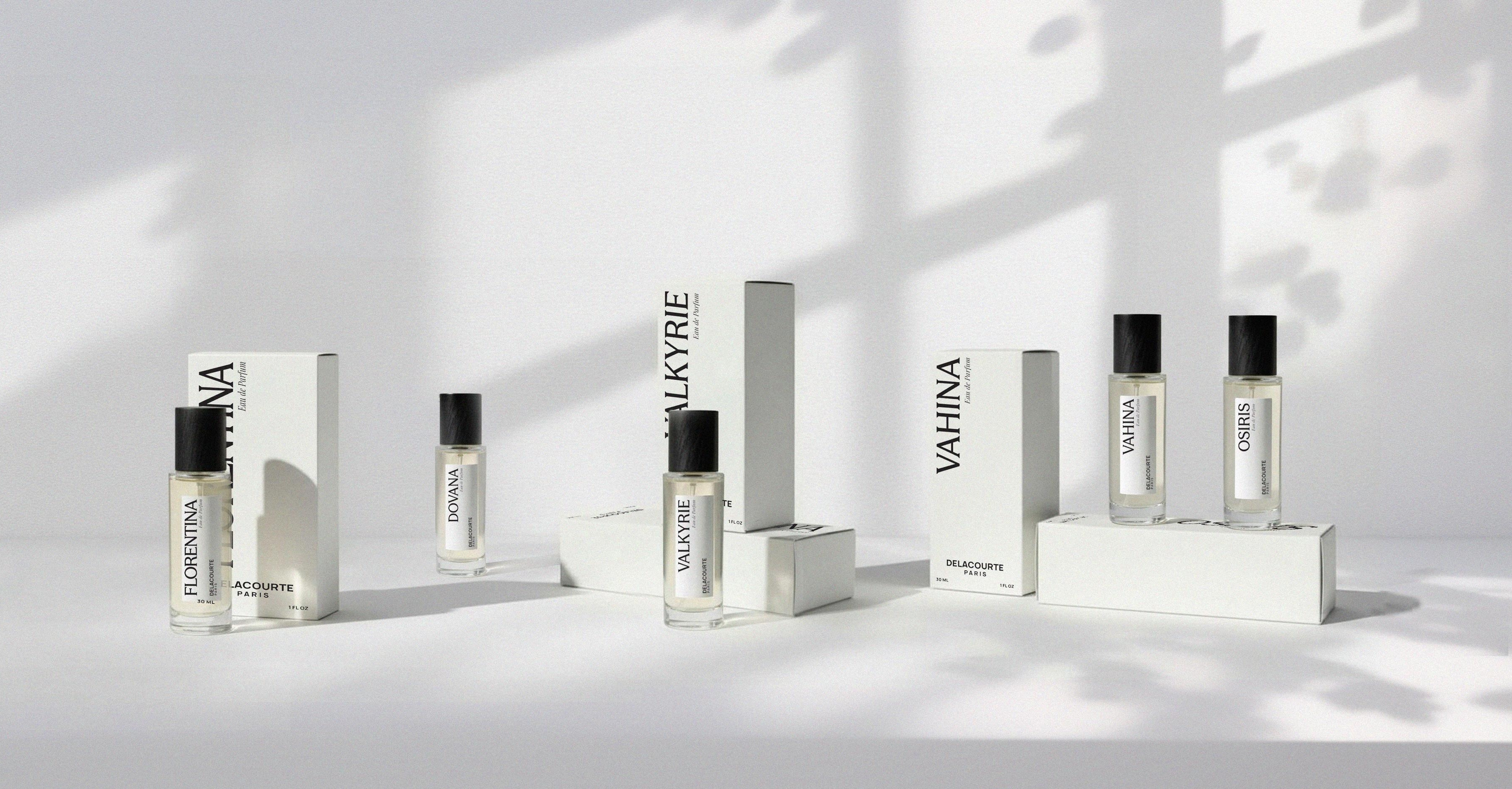Aromatic notes
Aromatic notes bring a lot of freshness to a fragrance. They are classified in three main groups:
- Lavender notes: lavender, lavandin, thyme, laurel.
- Mint notes: frizzy mint, pouliot mint, mint.
- Aniseed notes: basil, anise, tarragon.
Flowers
Flowers are part of the raw materials used in perfumes. There are different categories of flowers in perfumery:
- Green flowers, spring or vegetal flowers
- White, sensual flowers or solar flowers
- Powdery flowers
- Spicy flowers
- Roses
- Atypical flowers
Green flowers, spring or vegetal flowers: the flowers of renewal
Spring flowers, also known as flowers of renewal evoke freshness, spontaneity and cheerfulness. They are composed of green and vegetal notes. Some green flowers: lily of the valley, lilac, frisia, seringa, narcissus, daffodil and hyacinth.
White and sensual flowers
They are also called sensual or narcotic flowers, because they often have in common a molecule indole, a natural animal note. Jasmine, tuberose, orange blossom, magnolia and gardenia are white flowers.
Solar flowers: exotic flowers
The solar flowers, such as frangipani, ylang ylang and tiare flowers, evoke tropical islands.
Spicy flowers
The spicy flowers group includes:
- Carnation: the rebellious flower
- Clove: the sweet flower
- Immortal: the flower of the scrubland
Powdery flowers
The powdery flowers group:
- Iris: the noble flower
- Mimosa: the flower of the riviera
- Cassie: the cousin of the mimosa
- Violet: the shy flower
- Heliotrope or Heliotropine: the vanilla flower
Rare or atypical flowers
Among the rare or atypical flowers, you will find:
- Reseda: the retro flower
- Champaca: the strange flower
- Genet: the honeyed flower
- Pittosporum: the flower of the bush
- Mahonia: the mysterious flower
- Karo Karounde: the charismatic flower
Fruits
Fruits are among the raw materials used in perfumery. Some fruits can be used naturally, while others have to be processed by synthesis, as it is impossible to extract their essence.
Definition of fruity notes
Fruits bring a lot of cheerfulness to the perfumes and give them a real flavour.
In perfumery, fruity notes are very varied, and many types of fruit are used (red fruits, yellow fruits, watery fruits, exotic fruits etc.).
In a perfume, fruity notes can be orchestrated in several ways:
- either fresh, subtle and unsweetened to accompany citrus fruits or fresh flowers
- to clearly highlight a gourmand signature
Fruity notes should not be confused with citrus notes and citrus fruits (cf. Citrus Facet).
Among the fruits at the perfumer’s disposal, you will find:
Red fruits
- Raspberry
- Strawberry
- Wild strawberry
- Cherry
- Blackcurrant and blackcurrant bud
Yellow fruits
- Peach
- Plum
- Apricot
Exotic fruits
- Coconut
- Mango
- Pineapple
- Banana
- Passion fruit
Watery fruits
- Melon
- Watermelon
Juicy fruits
- Apple
- Lychee
- Kiwi
Other fruits
- Fig
Spices
There are two categories of spices: fresh and warm. The fresh spices act more as top notes and the warm spices as heart and base notes.
Fresh spices
- Cardamom
- Coriander
- Pink pepper
- Timut pepper
- Ginger
- Juniper berries
Warm spices
- Nutmeg and mace (its husk)
- Cinnamon wood
- Peppers
- Saffron
- Pepper berries
Woods
Woods are part of the vegetable raw materials used in the perfume compositions. In perfumery, woods are, in fact, the bark of trees, moss or resin. Many different woods can be used in perfumes, among which:
- Sandalwood
- Cedar
- Patchouli
- Vetiver
- Cypress
- Oud wood
- Guaiac wood
- Birch wood
Balms and resins
Balms and resins often intervene in the oriental or amber family. They complement vanilla and give mystery to the fragrance. They are also called balsamic notes.
Among the balms and resins, you will find:
- Myrrh
- Incense
- Opopanax
- Benzoin
- Peru balm
- Copahu balm
Animal notes
Animal musk
Animal musk, today forbidden, is one of the animal raw materials used in perfumery in the past, along with civet, castoreum, ambergris and hyraceum.
Beeswax
Beeswax is one of the natural raw materials used in perfumery. The essential oil of honey does not exist but perfumers are able to orchestrate the honeyed notes of beeswax with many other facets or olfactory families.
Hyraceum
Hyracene, also called African Stone, is an animal essence used in perfumery. It is part of the natural animal notes, along with civet, musk, castoreum, and ambergris.
Ambergris
Ambergris is a concretion secreted by the sperm whale with the appearance of a gray stone. It is rejected by the animal, floats to the surface, and then harvested. This animal raw material is very rare and therefore very expensive. Under no circumstances the whale is killed, so the raw material is authorized.
Perfumes Sylvaine Delacourte
Discover Sylvaine Delacourte’s brand with her Orange Blossom, Musk and Vanilla Collections. You can try them thanks to the Discovery Boxes (5 Eaux de Parfum x 2 ml) and rediscover these raw materials as you have never smelled them before.

